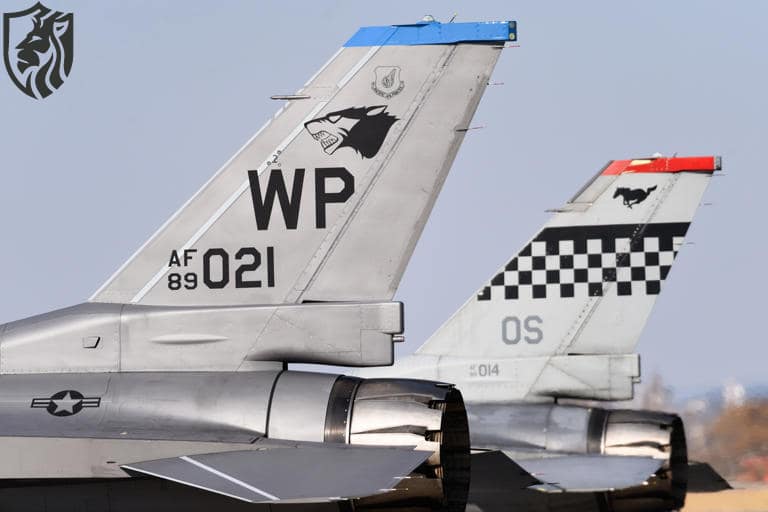
US Moves F-16s closer to North Korea for Super Squadron Trial
The U.S. Air Force has started relocating its F-16 Fighting Falcons from Kunsan Air Base to Osan Air Base in South Korea. This shift marks the second phase of the service’s Super Squadron Test, a force optimisation programme designed to evaluate whether a larger, consolidated unit can generate superior combat capabilities and operational efficiency.
Osan Air Base lies just 80 miles from the North Korean border, placing these assets significantly closer to potential flashpoints. The first phase of the Super Squadron Test began in October 2023, involving the transfer of nine F-16s and 150 airmen. Phase two, approved in April 2024, escalates the initiative.

Super Squadron Test Expands With More F-16s and Personnel
By the end of summer 2025, the Air Force will station a total of 31 F-16s and approximately 1,000 airmen at Osan. While the deployment is temporary, it reflects a focused effort to streamline airpower operations under the Super Squadron Test framework.
According to Capt. Bryce Hughes, officer in charge of sortie generation at the 51st Maintenance Group, “Osan is receiving additional F-16s as part of the Super Squadron Test Part II initiative.” He emphasised that this test aims to determine whether consolidation leads to stronger combat powers and greater logistical efficiency.
Enhancing Deterrence on the Korean Peninsula
Despite framing the F-16 transfer as a test, its strategic implications are difficult to overlook. The repositioning enhances the United States’ ability to project force near North Korea, at a time when tensions on the peninsula remain volatile. It also reflects the Air Force’s broader effort to refine operational logistics and personnel management in forward-deployed theatres.
Kunsan Air Base, long considered a cornerstone of U.S. airpower in South Korea, will retain its strategic function. However, Osan’s reinforced capabilities will boost the overall posture of the Seventh Air Force, further strengthening U.S. and South Korean defence cooperation.
A Warfighter Mindset Amid Tactical Evolution
Col. Peter Kasarskis, commander of the 8th Fighter Wing, praised the move’s alignment with the Wing’s legacy and mission. “We’ll meet this change with the same warfighter mindset the Wolf Pack has maintained through our history,” he stated. He added that the unit remains committed to defending its base and preparing for any northern escalation.
As part of the test, the 51st Fighter Wing is set to ramp up its joint training exercises with the Republic of Korea Air Force (ROKAF). These efforts aim to sharpen combat readiness, especially in the domains of air interdiction, close air support, and air strike coordination.

Legacy of Readiness: The 51st Fighter Wing’s Role
The 51st Fighter Wing has inherited a legacy rooted in the Korean War and is well known for maintaining a “Fight Tonight” posture. This doctrine reflects a state of perpetual readiness, with forces prepared to respond immediately to hostilities.
Col. Ryan Ley, the current 51st Fighter Wing commander, reaffirmed the Wing’s leadership in the Super Squadron Test. “I’m proud of what the Mustangs have accomplished already,” he said. “I look forward to testing the limits of what we can do over the next year.”
As the test progresses, it will assess not only sortie generation but also the effectiveness of integrated maintenance, logistics, and personnel support at scale. If successful, the Super Squadron model may be adopted in other forward-deployed commands.
Conclusion: A Strategic Test with Long-Term Impact
The Super Squadron Test at Osan may prove pivotal in reshaping how the U.S. Air Force organises its forward-based tactical assets. By consolidating aircraft and personnel, the initiative seeks to increase combat efficiency while validating Despite the temporary nature of the test, its outcomes could significantly impact
It is framed as temporary, but its outcomes could have lasting effects on U.S. airpower doctrine in the Indo-Pacific. As North Korea continues to develop missile capabilities and provocations rise, forward-deployed F-16 squadrons at Osan stand as both a deterrent and a rapid response asset.






